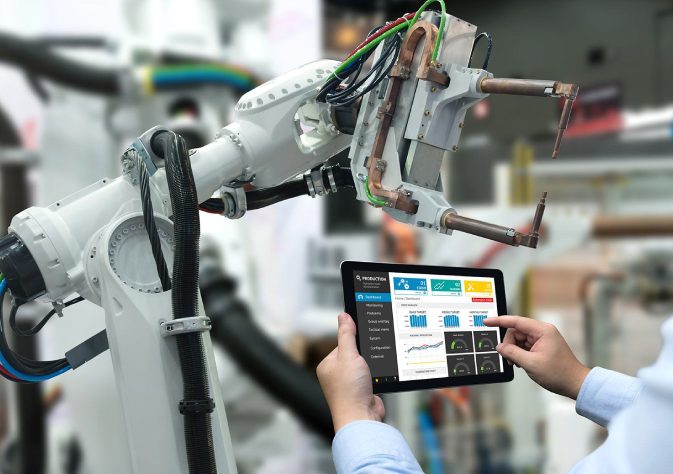In Czech, the word “Robot” is defined as “Forced Labor”, which was primarily introduced in the early 1920. It is only somewhere in the year 1960 did the industries see then introduction of robots in their field. It was introduced in the production floor of an assembly unit in a manufacturing industry. In scientific terms, the robots used in industries are termed as a system that can be auto controlled, versatile strategists, reprogrammable, that can be kept stationary or mobile depending on their application. In a manufacturing industry, the robots are a replacement for humans to perform dangerous tasks with precision and to cut down on monotony.
Common Implementations of Robot in Industries
- Welding
Welding by robots became a popular one in the year 1980. The main reason behind the shift from welding being a human task to robot based is to enhance safety for humans from burns during welding and also intake of dangerous fumes during the process.
- Spot-Weld
Attaching and joining two surfaces of metals through a humungous amount of current hit at that spot allows the metal in that area to melt and form a binding weld. This process is done in a very minimal time using robots.
- Raw material management
Robots utilised in management of raw materials are used for choosing the products, packing them and then organising them in a certain order. The robots can also be tuned to transfer the parts of one instrument into another. This thus lowers the labor cost and also restrains humans from difficult and dangerous functions.
- Machine Inclined
Servicing raw materials by on-loading and off-loading for and after processing and also to overlook the equipment during the process is done by Robots.
- Painting
Production units running on automotive process uses painting by robots so as to higher the grade and uniformity of the products. Reworking is less in turn reducing the extra cost involved.
Robotic Features Considered a Boon in Manufacturing
- Choosing, Wrapping and Packaging
Before the product reaches the shipping stage, they are handled numerous times for multiple reasons. Thus the role of robots in Choosing, wrapping and packaging is large as they eliminate mistakes and enhances rapidness and precision by reducing cost in manufacturing.
- Assembling
The monotony and tediousness human face of putting together a product is brought to an end by replacing humans with robots, thus making them work round the clock as well as increase productivity and decrease cost on human employment.
Functions such as grinding, polishing, cutting, sealing with adhesive or gluing, spraying, etc., performed by robots increases the functionality to a higher pace with enhanced quality and precision rendered to the end product.

